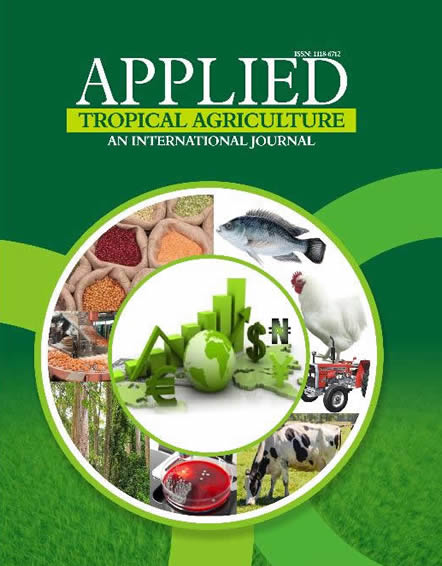Trees are of great importance to man and the environment. They may be used for food, construction, windbreak, shade and
aesthetic potentials amongst others. In this study, the diversity and abundance of tree species at the University of Benin
main campus, Benin City, Nigeria was assessed. The University was divided into two sites for proper sampling using
transects. Results reveal a total of 214 individual trees of 20 tree species from 12 families were encountered. Most common
tree species include Elaeis guineensis, Cocos nucifera, Terminalia catappa, Areca catechu and Roystonea regia. The
dominant families are Arecaceae, Fabaceae, Myrtaceae, Moraceae, Combretaceae and Euphorbiaceae. Monocotyledonous
and dicotyledonous trees account for 59.04 % and 40.96 % of trees available in the sampled sites respectively. About 76.13
% of the trees encountered were exotic while 23.87 % were native. Angiosperms had 188 representatives (84.68 %) while
gymnosperms had 34 representatives (15.32 %). Elaeis guineensis (with relative density of 22.07) was the most abundant
species. Trees such as Albizia zygia, Delonix regia, Terminalia ivorensis had relative density < 1 and as such may be
considered threatened within the study area. Margalef species richness index was 2.568 for site A and 2.108 for site B
while Shannon-Wiener diversity index was 0.836 and 0.675 for sites A and B respectively. Comparing the levels of diversity
using Sørensen’s similarity coefficient suggest both sites are only 25 % similar. Within the study area, trees species are
threatened by anthropogenic activities especially tree felling for infrastructural developments regardless of their
environmental roles and inherent benefits. Therefore sustainable conservation efforts should be geared towards ensuring
their continuous existence in order to maintain environmental integrity.
PAPER TITLE :DIVERSITY AND ABUNDANCE OF TREE SPECIES IN THE UNIVERSITY OF BENIN, BENIN CITY, NIGERIA
APPLIED TROPICAL AGRICULTURE | VOLUME 21 NUMBER 3 2016
Paper Details
- Author(s) : Ogwu, M.C.1,2*, Osawaru, M.E.1 and Obayuwana, O.K.1
- Abstract:


